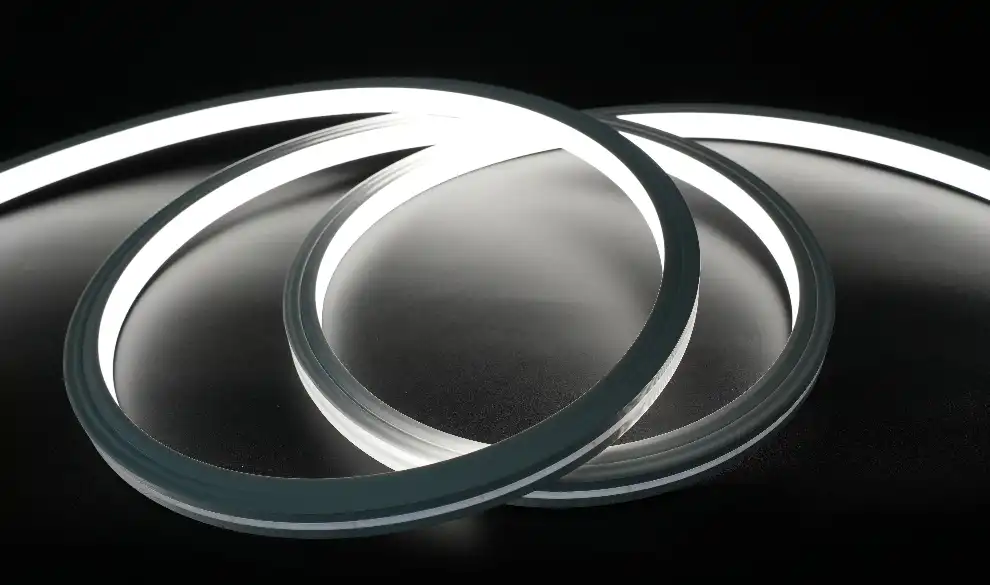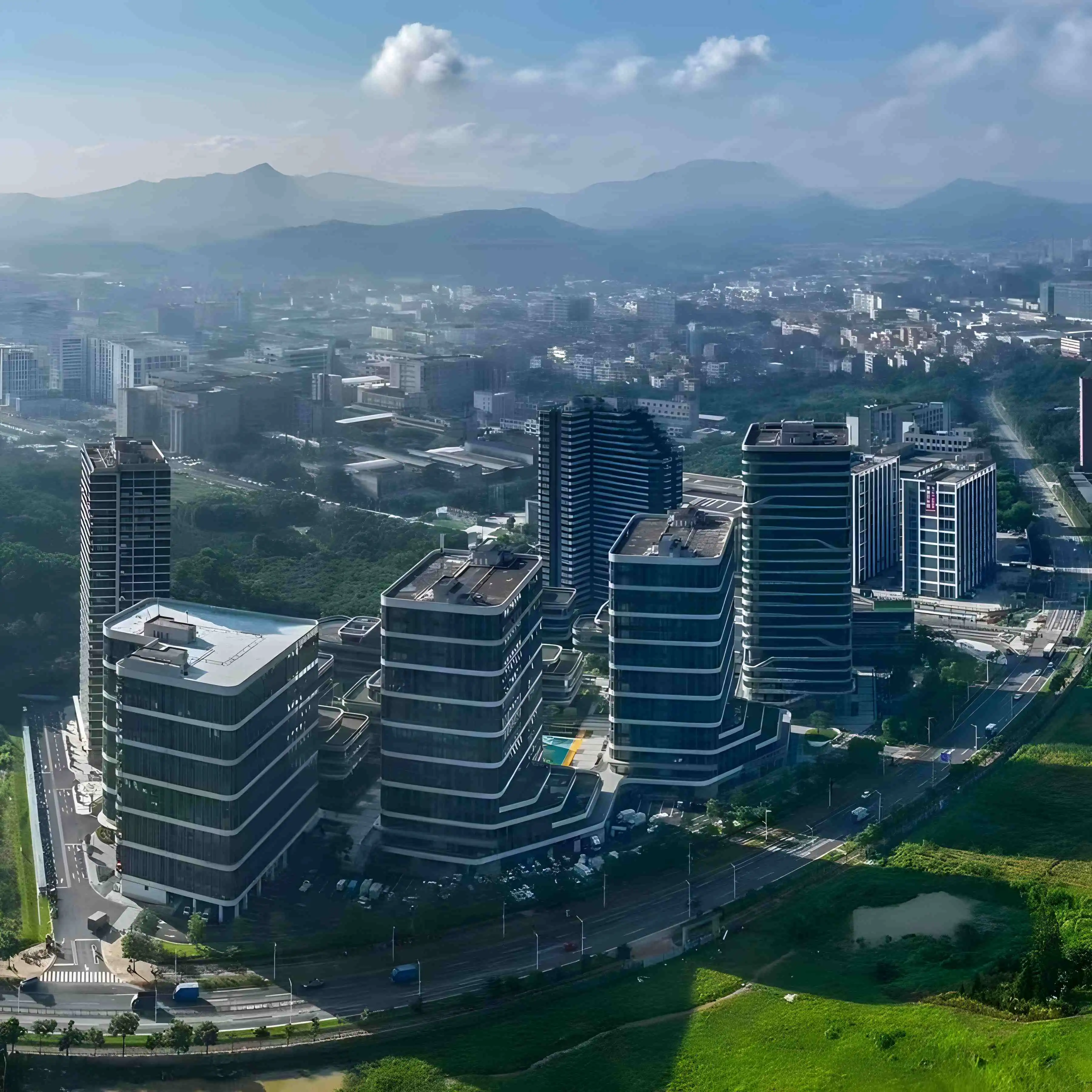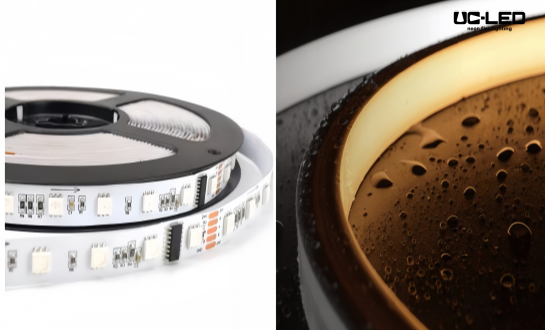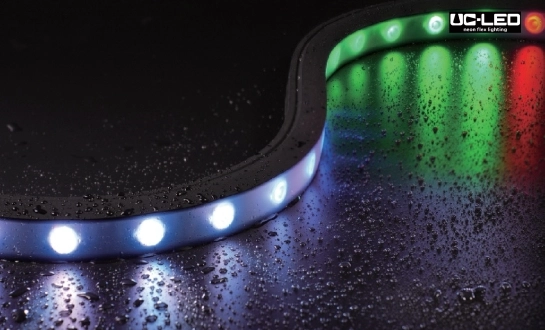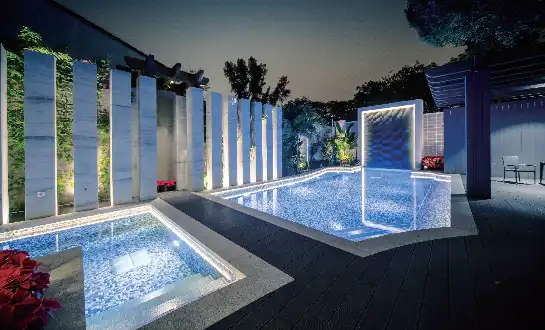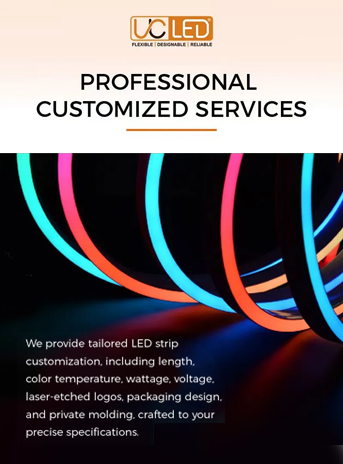The Composition and Features of Silicone LED Neon Flex
Understanding the Structure of Silicone LED Neon Flex
Silicone LED neon flex is a cutting-edge lighting solution that combines the best of both worlds: the flexibility and visual appeal of traditional neon lighting with the efficiency and durability of modern LED technology. At its core, this innovative product consists of a series of high-quality LED beads encased in a flexible, food-grade silicone extrusion.
The LED beads used in silicone neon flex are typically SMD (Surface Mounted Device) LEDs, known for their compact size and excellent light output. These LEDs are mounted on a flexible PCB (Printed Circuit Board) that allows the strip to bend and conform to various shapes and contours. The PCB is then encased in a silicone housing, which not only protects the internal components but also acts as a diffuser, creating a smooth, even light distribution that mimics the appearance of traditional neon tubes.
Key Features That Make Silicone LED Neon Flex Suitable for Harsh Environments
Several features make silicone LED neon flex particularly well-suited for harsh environments:
- Waterproof and Dustproof: The silicone housing provides excellent protection against water and dust ingress, typically achieving an IP65 or IP67 rating. This makes it suitable for outdoor use and in environments with high humidity or airborne particles.
- UV Resistance: The high-quality silicone used in these products is resistant to UV radiation, preventing yellowing or degradation when exposed to sunlight over extended periods.
- Temperature Tolerance: Silicone LED neon flex can withstand a wide range of temperatures, from freezing cold to scorching heat, making it suitable for use in various climates.
- Chemical Resistance: The silicone material is resistant to many chemicals, including acids and alkalis, enhancing its durability in industrial environments.
- Flexibility and Durability: The flexible nature of silicone allows the neon flex to be bent and shaped without cracking or breaking, while also providing shock absorption to protect the internal components from impacts.
These features combine to create a lighting solution that can withstand the rigors of harsh environments while maintaining its aesthetic appeal and functionality over time.
Applications of Silicone LED Neon Flex in Challenging Settings
Outdoor Architectural Lighting
One of the most prominent applications of silicone LED neon flex is in outdoor architectural lighting. Its ability to withstand various weather conditions makes it an excellent choice for highlighting building facades, outlining rooflines, or accentuating landscape features. The flexibility of the product allows designers to create intricate patterns and shapes that can transform the appearance of structures after dark.
In coastal areas, where salt spray and high humidity can quickly corrode traditional lighting fixtures, silicone LED neon flex proves its worth. Its resistance to moisture and salt ensures that the lighting remains vibrant and functional for years, even in these challenging conditions. The UV resistance of the silicone material also prevents discoloration or degradation due to intense sunlight exposure, maintaining the aesthetic appeal of the installation over time.
Industrial and Manufacturing Environments
In industrial settings, lighting fixtures are often exposed to harsh conditions such as extreme temperatures, dust, and chemical fumes. Silicone LED neon flex excels in these environments due to its robust construction and resistance to various environmental factors.
For instance, in manufacturing plants where temperatures can fluctuate dramatically, the temperature tolerance of silicone neon flex ensures consistent performance. Its resistance to dust and fine particles makes it suitable for use in facilities like sawmills or metalworking shops, where airborne contaminants are common. The chemical resistance of the silicone housing also protects the internal components from corrosive atmospheres that might be present in certain industrial processes.
Marine and Underwater Applications
The waterproof nature of silicone LED neon flex opens up possibilities for marine and underwater lighting applications. In marina settings, it can be used to illuminate docks, walkways, and boat slips, providing both safety and aesthetic benefits. The product's resistance to saltwater makes it particularly suitable for these coastal environments.
Some variants of silicone LED neon flex are designed for complete submersion, allowing for creative underwater lighting in fountains, pools, and aquariums. The ability to create continuous lines of light underwater can enhance the visual appeal of these aquatic features while withstanding the constant exposure to water and pressure.
Advantages of Silicone LED Neon Flex Over Traditional Lighting Solutions
Energy Efficiency and Longevity
One of the most significant advantages of silicone LED neon flex over traditional lighting solutions is its superior energy efficiency. LED technology inherently consumes less power than conventional light sources, and when combined with the efficient design of neon flex strips, the result is a lighting solution that can dramatically reduce energy costs.
Typically, silicone LED neon flex operates at a power consumption of around 18W per meter, which is substantially lower than traditional neon or fluorescent tubes. This efficiency not only translates to lower electricity bills but also reduces the overall carbon footprint of lighting installations.
Moreover, the longevity of LED technology is unparalleled. With a typical lifespan of 50,000 hours or more, silicone LED neon flex far outlasts traditional lighting options. This extended lifespan means less frequent replacements, reducing maintenance costs and minimizing disruptions, especially in hard-to-reach or hazardous environments.
Flexibility in Design and Installation
The flexibility of silicone LED neon flex opens up a world of design possibilities that are simply not achievable with rigid lighting solutions. The ability to bend and shape the lighting strip allows for seamless integration into various architectural elements and creative lighting designs.
Installation of silicone LED neon flex is also considerably easier and more versatile compared to traditional neon. It can be cut to specific lengths, typically at designated intervals, allowing for customization on-site. The lightweight nature of the product reduces structural load concerns, and its low voltage operation (typically 24V DC) enhances safety during installation and operation.
Safety and Environmental Considerations
Safety is a paramount concern in any lighting installation, particularly in harsh or hazardous environments. Silicone LED neon flex offers several safety advantages over traditional lighting solutions:
- Low Voltage Operation: Operating at 24V DC, it poses a lower risk of electrical hazards compared to high-voltage systems.
- No Glass Components: Unlike traditional neon tubes, there's no risk of broken glass in case of damage.
- No Mercury Content: LED technology eliminates the need for mercury, which is present in fluorescent and some neon lighting, reducing environmental hazards.
- Low Heat Emission: LEDs generate less heat than traditional light sources, reducing fire risks and improving energy efficiency.
From an environmental perspective, the long lifespan and energy efficiency of silicone LED neon flex contribute to reduced waste and lower carbon emissions over time. Additionally, the absence of mercury and other hazardous materials makes disposal at the end of its life cycle more environmentally friendly.
Conclusion
Silicone LED neon flex represents a significant advancement in lighting technology, particularly for harsh and challenging environments. Its unique combination of durability, flexibility, and efficiency makes it an ideal choice for a wide range of applications, from outdoor architectural lighting to industrial settings and marine environments.
The robust silicone housing provides excellent protection against water, dust, UV radiation, and chemical exposure, ensuring long-lasting performance in conditions that would quickly degrade traditional lighting solutions. The energy efficiency and longevity of LED technology translate into significant cost savings and reduced environmental impact over the product's lifetime.
For those interested in exploring the potential of silicone LED neon flex for their projects or seeking more information about this innovative lighting solution, please don't hesitate to reach out. Contact us at Linda@uc-led.com to discuss how we can illuminate your vision, no matter how harsh the environment.
